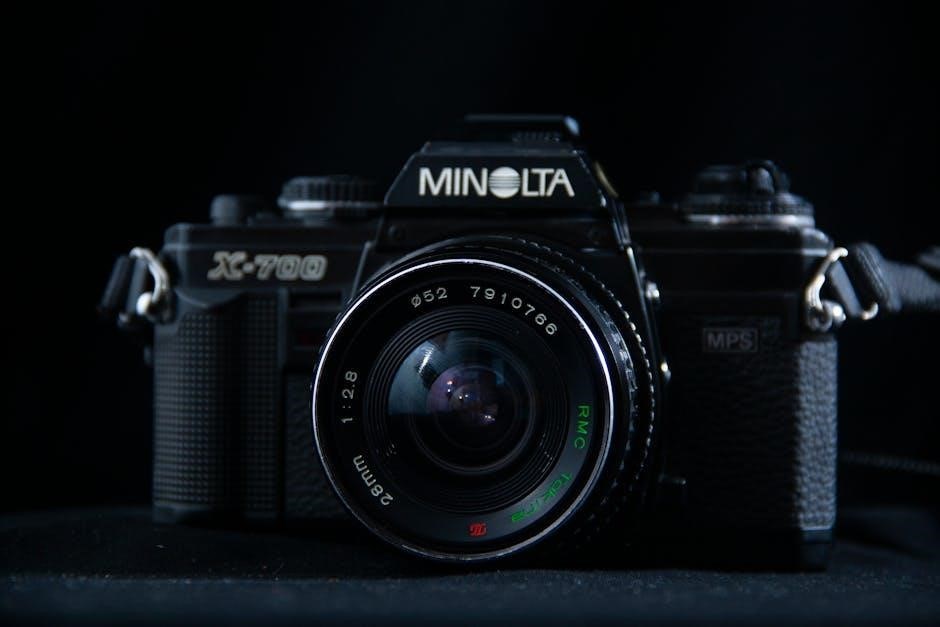Elections are a cornerstone of democracy, enabling citizens to choose leaders through fair processes. This unit explores the fundamentals, importance, and impact of elections globally and their role in shaping societies.
Key Concepts and Terminology
Understanding elections requires familiarity with key terms. A ballot is the means of casting votes, while a candidate is an individual seeking office. Constituency refers to a geographic area represented by an elected official. The electorate encompasses all eligible voters. Majority determines the winner in many systems. A referendum allows citizens to vote on specific policies. Voter turnout measures participation rates, reflecting civic engagement.
The Importance of Elections in a Democracy
Elections are a cornerstone of democracy, ensuring accountability, representation, and legitimacy. They allow citizens to hold leaders responsible and voice their preferences, fostering a government reflective of public will. By enabling peaceful transfers of power, elections promote stability and prevent authoritarianism. They safeguard rights, encourage civic engagement, and uphold the rule of law, making them essential for a functioning democracy.
The Electoral Process
The electoral process is a structured system that includes candidate nominations, voter registration, and campaign finance regulations to ensure fair and representative elections.
Candidate Nomination and Qualifications
Candidate nomination is the process by which political parties select individuals to run for office. Qualifications vary but typically include age, citizenship, and residency requirements. Candidates must often collect signatures or meet filing deadlines to appear on ballots. Some jurisdictions require candidates to disclose financial information or pass background checks. These qualifications ensure eligibility and accountability, maintaining the integrity of the electoral process and upholding democratic principles. Proper nominations are essential for a fair and competitive election environment.
Voter Registration and Eligibility
Voter registration is the process by which eligible citizens ensure their right to participate in elections. Eligibility criteria typically include age, citizenship, residency, and mental capacity. Many jurisdictions require voters to register in advance, often with proof of identity and address. Registration ensures voter rolls are accurate and prevents fraud. Eligibility standards vary slightly by region but aim to uphold democratic principles of inclusion and fairness, ensuring all qualified citizens can cast their ballots effectively.
Campaign Finance and Regulations
Campaign finance involves the funding and spending of money in political campaigns. Regulations aim to ensure transparency and prevent corruption. Limits on contributions and expenditures are common, alongside disclosure requirements for donors. These rules help maintain the integrity of elections by reducing undue influence and promoting fair competition among candidates. Effective enforcement of these regulations is crucial to uphold public trust and accountability in the democratic process.
Voter Behavior and Participation
Voter behavior and participation are crucial in shaping election outcomes. Factors like demographics, party loyalty, and policy preferences influence decisions. Understanding these dynamics is essential for analyzing engagement and predicting results accurately.
Factors Influencing Voting Decisions
Voting decisions are shaped by various factors, including demographics, party loyalty, and policy preferences. Economic conditions, social issues, and candidate charisma also play significant roles. Media coverage and misinformation can influence perceptions, while personal experiences and cultural values further guide choices. Understanding these factors helps predict voter behavior and develop effective campaign strategies to engage and persuade voters, ultimately shaping election outcomes and political landscapes.
Voter Turnout Trends and Analysis
Voter turnout varies significantly across elections and demographics, influenced by factors like election type, voter access, and political engagement; Historical trends show higher turnout in presidential elections compared to midterms, with recent increases attributed to expanded voting rights and mail-in ballot access. Younger voters often have lower turnout rates, while older demographics consistently show higher participation. Analyzing these patterns helps identify barriers to voting and informs strategies to improve civic engagement and electoral representation.
The Role of Political Parties in Shaping Voter Behavior
Political parties significantly influence voter behavior by shaping perceptions of candidates and issues. They establish platforms that align with voter values, fostering loyalty and identification. Through campaigns, messaging, and endorsements, parties guide voter decisions. Factors like party affiliation, policy priorities, and candidate credibility often determine voter choices. This alignment can reinforce existing beliefs or sway undecided voters, ultimately impacting election outcomes and the political landscape. Understanding these dynamics is crucial for analyzing voter behavior and election results.
The Role of Media in Elections
Media plays a pivotal role in shaping public opinion during elections by providing coverage, debates, and analysis, influencing voter decisions and perceptions of candidates and issues.
Media Coverage and Its Impact on Public Opinion
Media coverage significantly influences public opinion during elections by shaping perceptions of candidates, policies, and issues. News outlets often prioritize certain stories, which can sway voter attitudes and decisions. Balanced reporting is crucial to ensure fairness, while biased coverage may mislead the electorate. Additionally, the rise of social media has intensified the spread of information, making it harder to distinguish fact from fiction. This underscores the need for critical analysis and media literacy to navigate the complexities of election-related content.
Debates and Their Influence on Voter Perception
Election debates provide a platform for candidates to articulate their policies and vision, directly influencing voter perception. These events allow voters to compare candidates’ stances, leadership qualities, and communication skills. A strong debate performance can enhance a candidate’s credibility, while a poor one may harm their image. Additionally, debates often highlight key issues, helping voters make informed decisions. The immediate reactions and post-debate analyses further amplify their impact on public opinion and electoral outcomes.
Addressing Misinformation and Disinformation
Misinformation and disinformation are significant threats to election integrity, often spreading through social media and unverified sources. These falsehoods can alter voter perceptions, erode trust in the electoral process, and influence outcomes. Combating this requires fact-checking initiatives, media literacy programs, and regulatory measures to ensure transparency and accountability. Platforms must also take responsibility for curbing the spread of fake news, while voters should critically evaluate information sources to make informed decisions. Addressing this challenge is essential for maintaining democratic integrity and public confidence in elections.
Election Security and Integrity
Election security and integrity are crucial to ensuring the accuracy and trustworthiness of electoral processes. Protecting against fraud, tampering, and cyber threats is essential to maintain public confidence.
Measures to Prevent Voter Fraud
Measures to Prevent Voter Fraud
Preventing voter fraud ensures electoral integrity. Key measures include voter ID laws, secure registration systems, and audits. These steps help verify identities and maintain accurate voter rolls, reducing fraud risks.
Cybersecurity Threats to Election Systems
Cybersecurity Threats to Election Systems
Cybersecurity threats to election systems pose significant risks to democratic processes. Hackers may target voter databases, voting machines, and result transmission systems. Malware, ransomware, and phishing attacks can disrupt elections. Securing these systems requires robust encryption, regular software updates, and thorough audits. Additionally, training election officials on cybersecurity best practices is crucial. Ensuring the integrity of election infrastructure is vital to maintaining public trust and preventing potential interference from malicious actors, both foreign and domestic.
Post-Election Audits and Recounts
Post-election audits and recounts are critical processes to ensure the accuracy and integrity of election results. Audits involve verifying vote counts through statistical sampling or manual recounts to detect discrepancies. Recounts are conducted when results are extremely close or discrepancies arise. Both processes aim to confirm the reliability of outcomes, fostering public confidence in the electoral system. These measures are essential for maintaining transparency and ensuring that the will of the voters is accurately reflected in the final results.
Historical Context of Elections
Understanding the historical context of elections is crucial, as it highlights the evolution of voting rights, landmark elections, and the expansion of democratic participation over time globally.
Landmark Elections in U.S. History
Landmark elections in U.S. history have shaped the nation’s political landscape. The 1789 election established George Washington as the first president. The 1828 election marked the rise of partisan politics. The 1860 election led to the Civil War. The 1920 election granted women suffrage. The 1960 election featured the first televised debate; The 2000 election saw a Supreme Court decision. The 2020 election occurred during a pandemic, highlighting resilience in democracy. These elections reflect the evolution of voting rights and democratic participation.
Evolution of Voting Rights and Expansion
The evolution of voting rights in the U.S. reflects a progressive expansion of suffrage. Initially restricted to white men, the 15th Amendment (1870) granted voting rights to African American men. The 19th Amendment (1920) extended suffrage to women. The 23rd Amendment (1961) gave D.C. residents electoral votes, while the 24th Amendment (1964) prohibited poll taxes. The 26th Amendment (1971) lowered the voting age to 18. Landmark legislation like the Civil Rights Act (1964) and Voting Rights Act (1965) further protected these rights, ensuring equitable access to the ballot box for all citizens.
Comparative Analysis of Past and Present Elections
Elections have evolved significantly over time, with advancements in technology and shifting societal values influencing voter behavior and campaign strategies. Historically, elections were often marred by limited suffrage and manual counting systems, whereas modern elections utilize electronic voting machines and robust voter registration databases. The rise of social media has also transformed how campaigns are conducted, with candidates now relying heavily on digital platforms to engage voters. These changes highlight the dynamic nature of elections in reflecting societal progress and technological innovation.
Election Reforms and Future Directions
Election reforms focus on enhancing integrity, accessibility, and transparency. Advances in technology, such as blockchain and online voting, aim to improve security and voter participation globally.
Proposed Changes to the Electoral System
Proposed electoral reforms aim to modernize voting processes, ensuring fairness and inclusivity. These include proportional representation, ranked-choice voting, and automatic voter registration. Additionally, integrating advanced technologies like blockchain can enhance election security and transparency. Expanding early voting options and mail-in ballots can increase voter accessibility. These changes seek to address historical inequalities and ensure every vote counts, fostering public trust in democratic systems.
Advancements in Voting Technology
Advancements in voting technology aim to enhance election integrity and accessibility. Blockchain-based systems are being explored for secure, transparent vote counting. Online voting platforms are increasingly adopted to improve voter turnout, especially among younger demographics. Electronic voting machines with paper trails are replacing outdated methods to reduce errors. Additionally, voter verification systems, such as biometric identification, are being implemented to prevent fraud. These innovations address modern challenges and ensure elections remain reliable and inclusive for all eligible voters.
International Perspectives on Election Processes
Election processes vary significantly across countries, reflecting diverse political systems and cultural contexts. Many nations, like Germany, use proportional representation, while others, such as the UK, rely on majoritarian systems. Voter registration practices also differ; some countries, like Sweden, have automatic registration, while others, such as the U.S., require active registration. Challenges like voter suppression and misinformation are global concerns. International cooperation and technological advancements, such as Brazil’s electronic voting system, aim to enhance election integrity worldwide.
Elections are vital for democratic governance. This guide provides foundational knowledge, with additional resources like books and online courses available for deeper understanding and further study.
Key Takeaways for Students
Understanding elections is crucial for grasping democratic processes. Key points include the importance of voter participation, the role of political parties, and the impact of media. Students should recognize how historical context shapes modern voting rights and how election security ensures integrity. Additionally, familiarizing oneself with electoral systems, campaign finance, and voter behavior provides a comprehensive understanding of elections. These concepts are essential for engaging in civic life and analyzing political outcomes effectively.
Recommended Reading and Study Materials
For a deeper understanding of elections, students should explore “The Electoral Process” by Richard G. Niemi and “Election Security in the Digital Age.” Additionally, the Reuters Institute’s study guides and the PRSA accreditation materials offer valuable insights. Online resources like the U.S. Election Assistance Commission and academic journals provide comprehensive analysis. These materials cover historical contexts, voter behavior, and modern electoral challenges, ensuring a well-rounded education on the subject.











































































